

In the early evening I decided to check the substrate of a terrarium in which I keep a centipede collected the 6th of November last year near the town of El Limón Totalco, Veracruz. I hadn't seen the centipede for months and was worried that it had died even though I've kept the substrate about as moist as in the original habitat using the plastic bottle false bottom technique which I use for several scorpion species I keep in captivity as well.
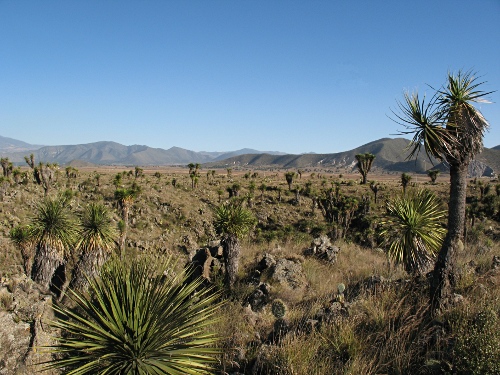
This technique consists of placing a plastic bottle with small holes in the bottom in the terrarium before putting any substrate in it. Next I had put a layer of about 0.5cm of very fine gravel at the bottom of the terrarium, more closer to the small bottle. Also the inside of the bottle was filled with the same material. Next, I put the actual substrate inside the terrarium; very fine sand / volcanic ash, until the same level as the very top of the plastic bottle. By pooring water carefully in the bottle the bottom of the substrate gets wet, the fine gravel providing a kind of reservoir.
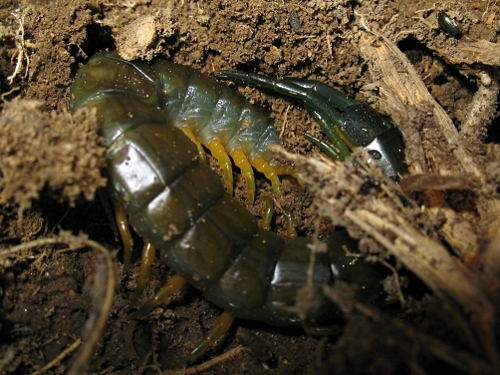
The above photo shows the centipede in its original micro habitat. Tiny water drops are visible on its rear segments. Also the substrate clearly contains moisture, hence I wanted to be sure I got the conditions right when I prepared its terrarium. The above specimen is about 8 cm long and has beautiful colors.
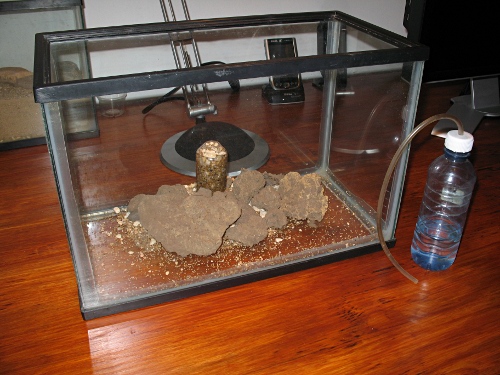
The above photo shows a terrarium I am preparing for keeping scorpions, Vaejovis sp., from the same area. Besides fine gravel I also used in this case several small pieces of volcanic rock. Notice that the bottle itself is also filled with fine gravel to prevent, in this case, scorpions from ending up inside. Moreover, in this set up a small piece of volcanic rock covers the bottle top.
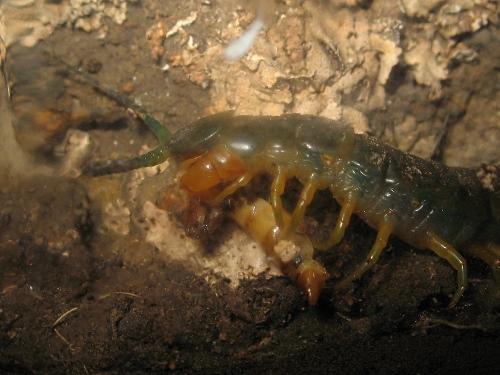
The first days in its new terrarium, a small but strong plastic container with a lid, I fed the centipede larvae of the darkling beetle (Zophobas morio) which it ate in record time, compared to how slow the scorpions I keep chomp through those "superworms". But soon the new "pet" disappeared into the substrate. At first I could see it through the plastic in one of the tunnels it had dug but soon I couldn't see it at all.
So today I decided to check the substrate of the centipede by pooring it carefully out of its terrarium onto a few pieces of paper, expecting to find a dead centipede. But what did I find? A healthy centipede wrapped around its brood.
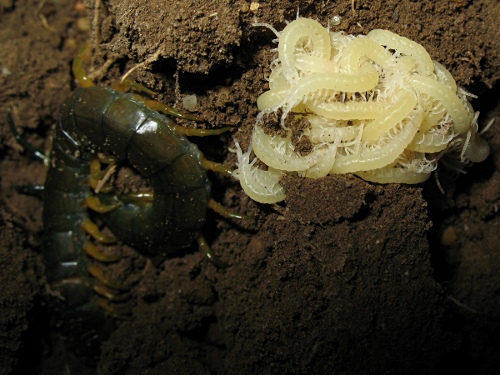
The young, at this stage in their development looking like white miniatures of their mother, are called protonymphs. After some more time (weeks) they will gain some color and some time after they will molt for the very first time.
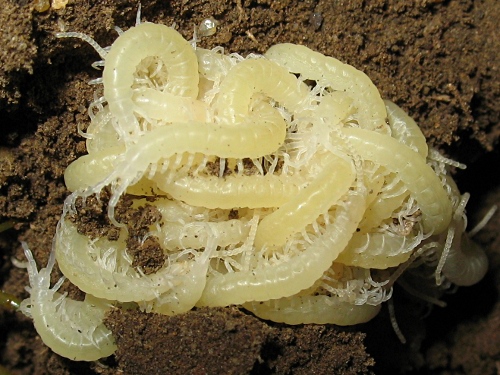
After I had taken a few photos I carefully spooned part of the substrate back into the plastic container I use as a terrarium. I made an artificial burrow close to the bottom and used the spoon to first carefully put the ball of protonymphs back followed by the mother. The latter tunneled herself into the substrate, away from her offspring, but I was expecting that she would return to them later on.
Since some of the substrate had clumped together I used a few of the larger clumps to cover the artificial burrow and then spooned the rest back into the terrarium.
In the night I checked a few times on the artificial burrow, which was visible through the back of the terrarium. The last times I checked the mother was wrapped again around the protonymphs and all looked well to me.
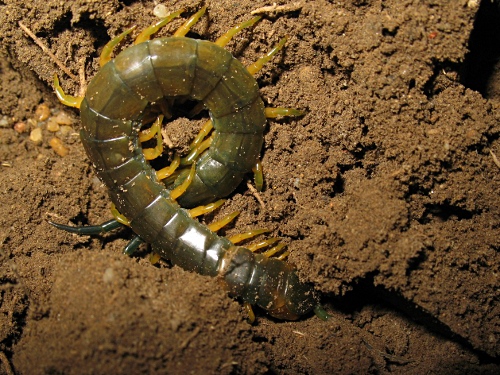
The above photo shows the centipede mother. If you compare the substrate in the photo with the subtrate of the original micro-habitat (the second photo on this page), you see that they look the same; the moisture level is very similar, or maybe even identical.
The plan is to raise the young ones and then release them in the wild, roughly at the same location the mother was captured.